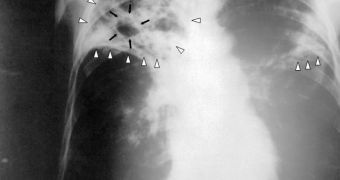A team of investigators from the Nationwide Children's Hospital (NCH) announces the discovery of a new marker for tuberculosis, that could be used to determine who will develop the condition in the future.
Tuberculosis is still a very dangerous disease, and one that continues to spread in areas of the world that are extremely poor. It is present in the developed world as well, as experts have been unable to eradicate it here.
The new marker can be identified through a blood profiling technique that is apparently extremely efficient at gagging risks associated with developing the condition.
“Tools to diagnose infections like TB, bronchiolitis and pneumonia have been developed and are actively used to classify patients as being infected with specific pathogens, but we are still unable to predict how each person is going to react to the infection,” says Octavio Ramilo, MD.
“It's difficult to predict patient outcomes, and this is a real problem,” adds Ramilo, who is the NCH chief of Infectious Diseases.
Full details of how the new observations technique functions were published in the August 19 issue of the esteemed scientific journal Nature.
“Each infectious agent, be it a virus or a bacterium, interacts with human immune cells in unique ways by triggering proteins on white blood cells,” explains scientist Dr Asuncion Mejias, MD.
“We can identify patterns among the white blood cell's activated proteins and identify a unique 'signature' for each infectious agent,” adds the expert, who is an investigator at the Center for Vaccines and Immunity in the NCH Research Institute.
“This technology allows us to see the whole picture of infection using a single blood sample, which is a really powerful tool for the clinic,” adds Dr. Mejias, saying that the team is using microarrays to conduct its investigations on patients' blood samples.
Ramilo is also excited by the tremendous potential that that newly-developed technique holds. He says that numerous lives could be saved thanks to it.
“It seems that we are developing a tool that can not only diagnose infectious diseases, but also indicate severity and eventually predict which patients are at risk for developing advanced symptoms,” he says.
“These capabilities are desperately needed in order to improve how patients recover from infections,” Dr. Ramilo concludes.

 14 DAY TRIAL //
14 DAY TRIAL //